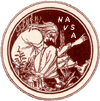CFP: Special issue of Nineteenth-Century Gender Studies
“Gender and journalism: Women and/in the news in the
nineteenth century”
Deadline: April 7, 2014
The recent surge in scholarly interest in the
nineteenth-century periodical press, hand in hand with ambitious digitization
projects allowing us ever-expanding access to primary materials, has increased
our ability to analyse and discuss the dynamic parameters of women’s
involvement with the industry. As the nineteenth century dawned, women
reporters were rarities, although celebrity journalists such as the poet and
novelist Mary Robinson found a home in the daily press. In the second
half of the century, an increasing number of women found employment in the
press often limited to the more or less cosy corners of journalism,
particularly women’s pages, fashion and society columns, and the children’s
corners of weekly and monthly periodicals. By century’s end, a fully
fledged women’s political press had emerged, and papers like the Women’s Penny Paper/Woman’s Journal devoted
extensive space to reporting news of women’s advances. Despite their
long-persisting exclusion from the ‘masculine’ domain of news reporting (and
limits on the social acceptability of their news reading), women had also been
making, breaking, and shaping the news throughout the nineteenth
century.
Barbara Onslow’s Women
of the Press in the Nineteenth Century (2000) offered a significant
early guide to the breadth of nineteenth-century women’s involvement with the
periodical industry, and re-introduced many once-feted but long-forgotten
names. Subsequent studies have delved into the riches and many facets of
that involvement; for example, Alexis Easley’s recent Literary Celebrity (2013) analyses the gendering of authorship
and fame in the second half of the nineteenth century. This special issue
of Nineteenth-Century Gender
Studies will concentrate on women as contributors to, consumers of,
and subjects of the multi-faceted construction of news and news reporting across
the nineteenth century. The editors wish to preserve a focus on news
production, as distinct from women’s more general involvement in magazine
writing and the creation of miscellanies, but the editors welcome broad
interpretations on ‘news production’.
Possible avenues for exploration might include:
- Early and little known women reporters
- Pioneering women correspondents: Flora Shaw; Emily Crawford; Florence Dixie
- Women in the news: Princess Caroline; Mrs Maybrick; other causes célèbres.
- The reporting of divorce cases and its impact on social attitudes and matrimonial law
- Women as readers and consumers of news
- Women and censorship
- Newspapers and the working class woman
- Changing definitions of news: Women and celebrity news; women and sensationalism
- Early papers targeted at women (such as The Lady’s Newspaper and The Queen)
- Women’s involvement with mainstream papers (such as theTimes and the Illustrated London News)
Articles presenting international perspectives on women
and/in the news are warmly welcomed.
Please send articles of 5-8,000 words to both the guest
editors, by April 7, 2014 (earlier submission is encouraged). Please
confine all identifying and contact information to a coversheet, for the
purposes of double-blind reviewing. Please also adhere to MLA style, and
use endnotes rather than footnotes. Finally, please include a short (150 word)
bio with your article submission.




